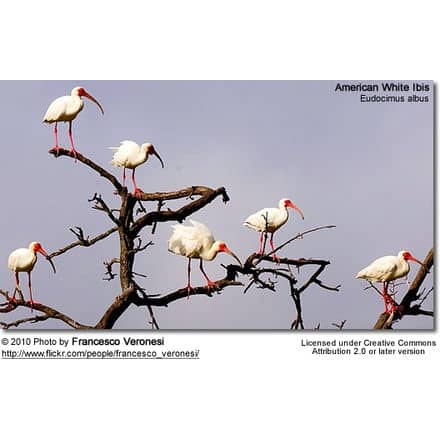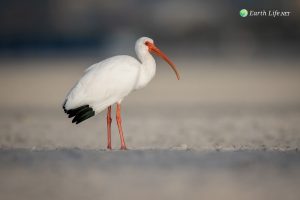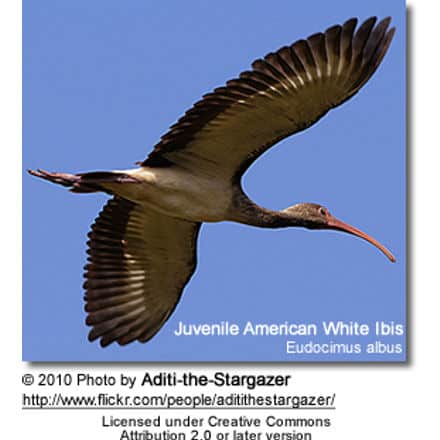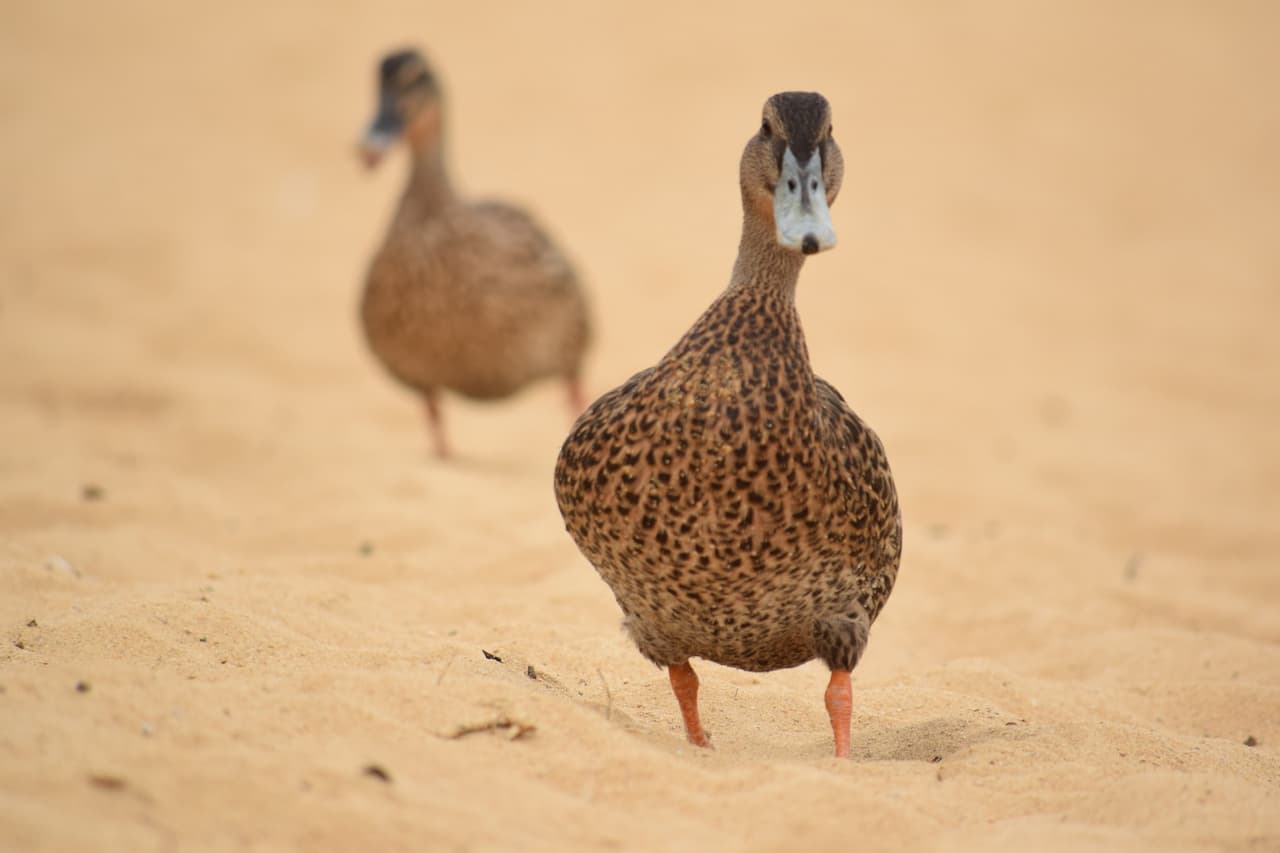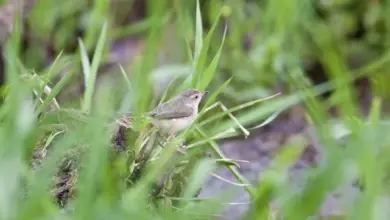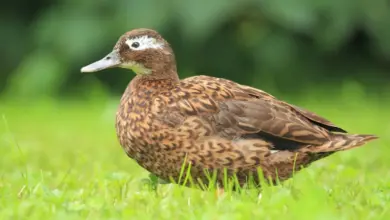American White Ibises
American White Ibises (Eudocimus albus)
American White Ibises (Eudocimus albus) is wading bird of the ibis family Threskiornithidae.
The American White Ibis is known to hybridize with the Scarlet Ibis, and these two species are sometimes considered conspecific (one and the same species).
Ibises resemble herons and share many of their habitats and behavioral traits, but unlike herons, ibises fly with necks outstretched and often in V-formation.
Distribution / Range
The American White Ibis occurs naturally from the mid-Atlantic coast of the United States south through most of the New World tropics. It occurs in marshy wetlands and pools near the coast.
It also occurs on mowed grass, lawns, and has become common in some city parks, where it can be found feeding alone or with other Ibis.
Description
Adult American White Ibises measure about 65 cm in length and have a 95 cm wingspan.
They have all-white plumage except for black wingtips (visible in flight) and reddish bills and legs. The red bill blends into the face of breeding birds; non-breeding birds show a pink to red face. Juveniles are largely brown with duller bare parts; they are distinguished from the Glossy and White-faced Ibises by white underparts and rumps. Over all both sexes look alike.
Like the other species of ibis, the White Ibis flies with neck and legs outstretched, often in long, loose lines.
Calls / Vocalizations
The song of the male is described as hunk-hunk-hunk-hunk.
The female squeals.
When feeding, the birds often give a soft, grunting croo, croo, croo as they forage
Breeding / Nesting
It builds a stick nest in trees, bushes, or over water, and 2 to 5 eggs are typically laid. White ibises are monogamous and colonial, usually nesting in mixed colonies with other wading species.
Diet / Feeding
This ibis feeds by probing with its long, downcurved beak.
Its diet consists of various fish, frogs and other water creatures, as well as insects and small reptiles.
Diet / Feeding
Ibises mostly feed in shallow waters on aquatic insects, mollusks, frogs, and food sifted from the water surface.
Their diet also includes insects caught on land, as well as lizards, worms, skinks, and other small reptiles.
Some species will also take small birds.
Breeding
Most breeding activities are observed after the rainy season, when plenty of food is available.
They typically nest in colonies, often with other water birds.
The nests are shallow cup-shaped platforms of sticks, grasses or reeds that are typically situated on trees near a body of water, such as rivers, swamps or lakes. Although some ibises also make their nest amongst rocks and on cliffs,
The average clutch consists of 2 – 4 eggs. The nests are often reused year-after-year.
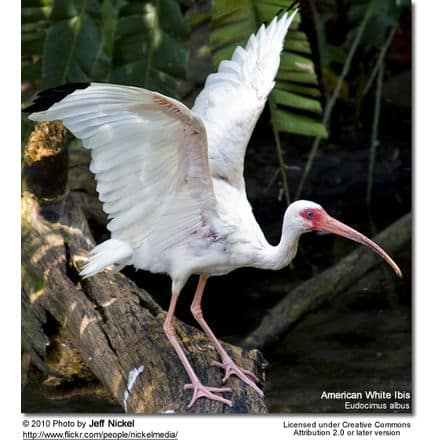
See also
